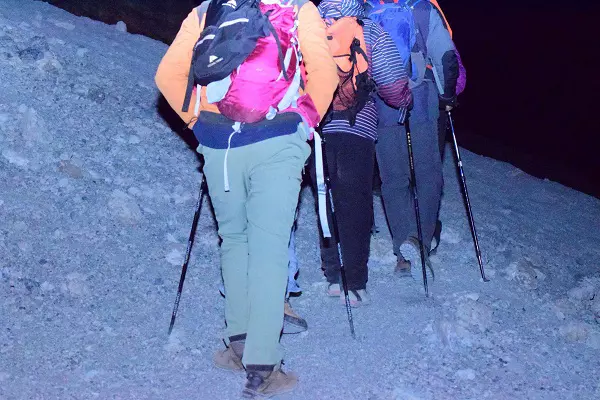
Among the various routes leading to the summit, the Lemosho Route stands out for its scenic grandeur and gradual acclimatization. In this guide, we delve into the details of climbing Kilimanjaro via the Lemosho Route, exploring the unique features, challenges, and unparalleled experience that awaits those who choose this iconic path.
The Lemosho Route is often hailed as one of the most picturesque paths to Uhuru Peak, the summit of Kilimanjaro. This route is celebrated for its diverse landscapes, which include lush rainforests, expansive heathlands, and alpine deserts. The journey is both a physical and visual odyssey, offering climbers a truly immersive experience.
The Lemosho Route begins at Londorossi Gate, where climbers complete registration and initiate their ascent into the dense rainforest. The trail gradually ascends, providing a gentle introduction to the challenges that lie ahead.
The journey kicks off with a trek through the rainforest, leading to the first camp at Mti Mkubwa. Towering trees and vibrant flora create a serene setting, setting the stage for the adventure.
Climbers venture further into the heath and moorland zone, reaching Shira 1 Camp. The expansive Shira Plateau unfolds, offering panoramic views and a taste of the vastness that characterizes the Lemosho Route.
The trek continues across the Shira Plateau, with the landscape shifting to the alpine desert. Shira 2 Camp provides a strategic stop, allowing climbers to acclimatize while relishing the stark beauty of the surroundings.
A challenging day unfolds as climbers ascend to Lava Tower before descending to Barranco Camp. This variation in altitude aids acclimatization, preparing the team for the higher altitudes.
The route navigates the Barranco Wall, a thrilling scramble that rewards climbers with stunning vistas. Karanga Camp serves as the next base, nestled in the rugged terrain.
Climbers ascend to Barafu Camp, the high camp situated at the base of Kilimanjaro's summit cone. The anticipation builds as the team prepares for the summit push.
The summit push begins in the early hours, reaching the majestic Uhuru Peak as the sun rises over the African plains. The descent to Mweka Camp follows, marking the completion of the journey.
While the Lemosho Route provides a longer itinerary for gradual acclimatization, climbers must remain vigilant for signs of altitude sickness. Adequate rest and hydration are crucial for a successful ascent.
Kilimanjaro's weather can be unpredictable. Climbers should be prepared for temperature variations, ranging from warm conditions in the lower zones to freezing temperatures at higher elevations.
Climbing Kilimanjaro Lemosho route demands physical fitness and mental resilience. Pre-climb training and regular exercise contribute to a smoother and more enjoyable journey.
The Lemosho Route offers a visual feast, encompassing rainforests, heathlands, alpine deserts, and the iconic Barranco Wall. Each day unfolds with new scenery, enriching the climbing experience.
Compared to some other routes, the Lemosho Route tends to have lower foot traffic, providing climbers with a more serene and exclusive journey.
Experiencing the sunrise from Uhuru Peak is a climactic moment. The breathtaking panorama from the highest point in Africa is a reward that transcends the challenges of the climb.
Choosing the Lemosho Route for climbing Kilimanjaro is not just about reaching the summit; it's about embracing the entirety of the journey. The route's diversity, the gradual ascent, and the breathtaking landscapes make every step a revelation. As climbers stand on Uhuru Peak, they not only conquer Africa's highest point but also carry with them the memories of an unforgettable odyssey through the heart of Kilimanjaro's majestic beauty.